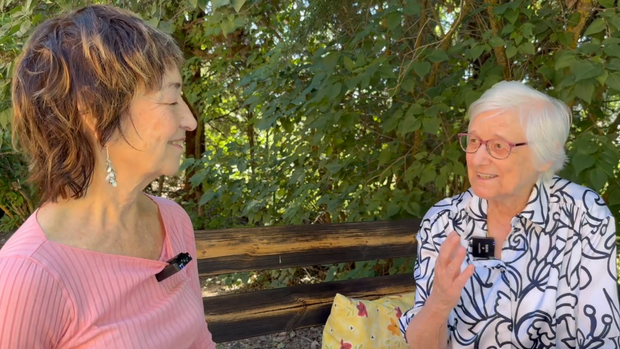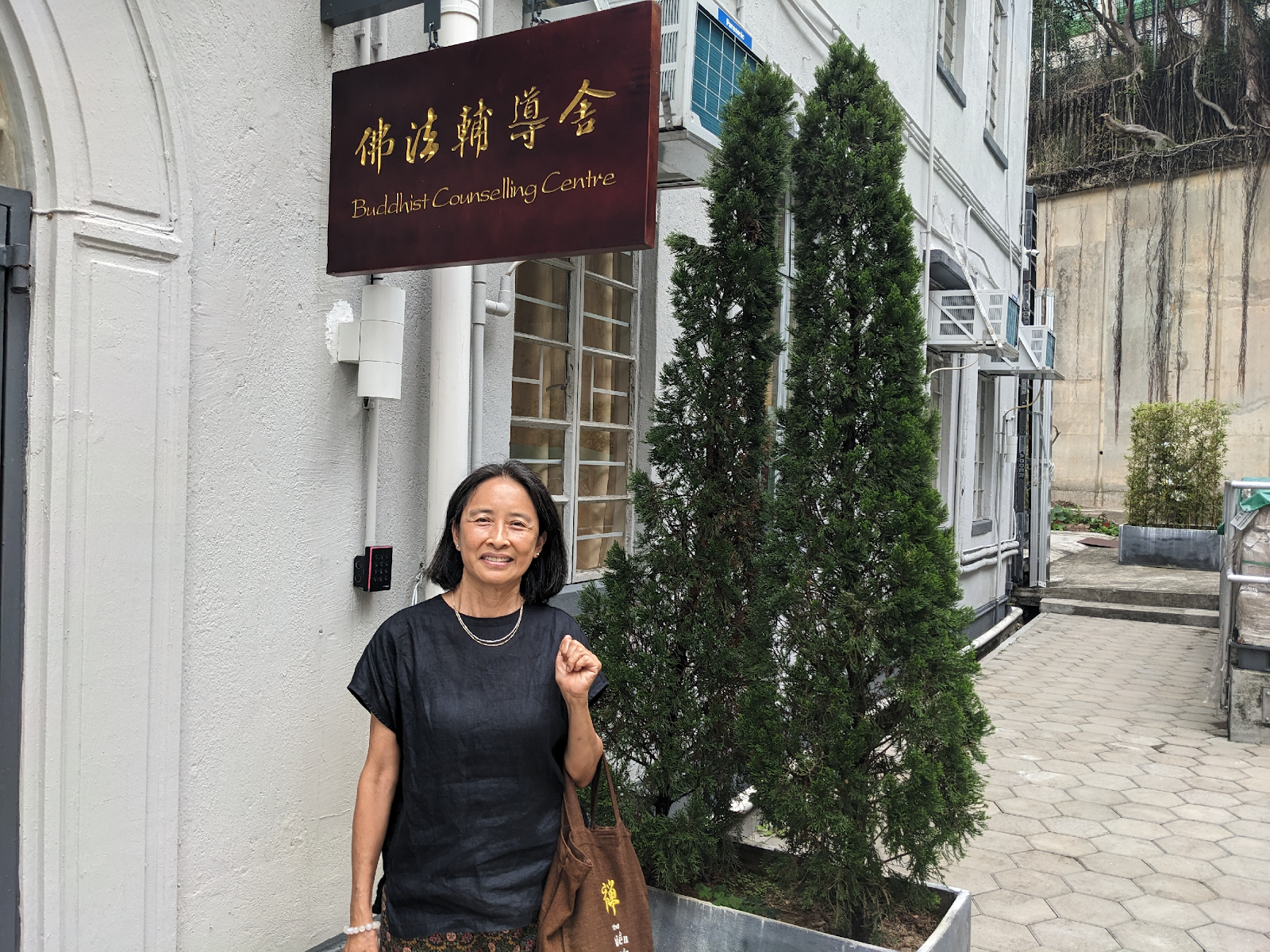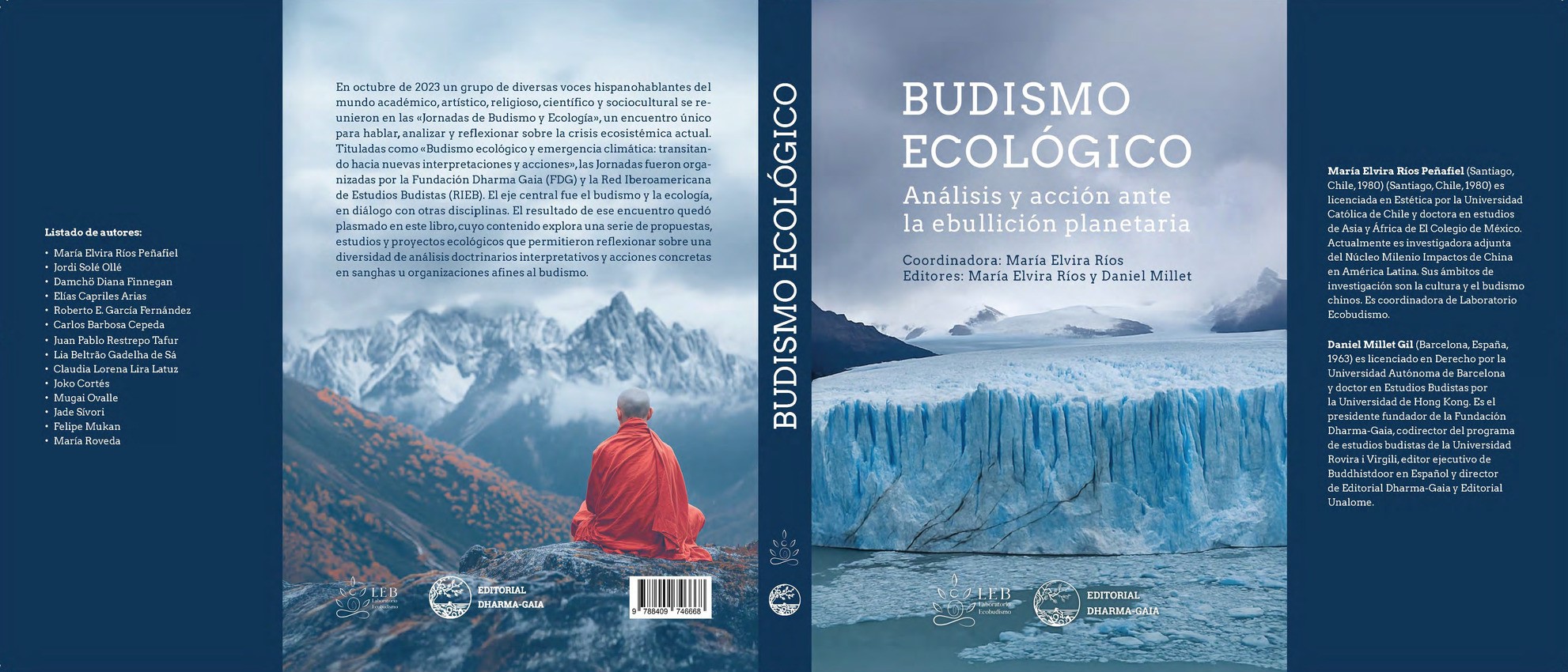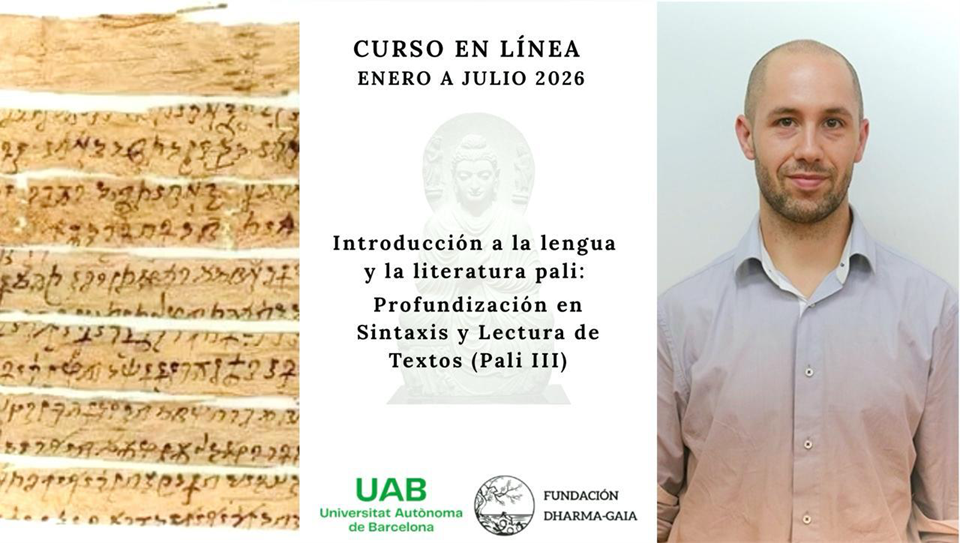
Dharma-Gaia Foundation is a non-sectarian Buddhist entity. We strive to promote an ecumenical view of the Buddhadharma that is inclusive of all Buddhist traditions.
learn more >Ongoing projects
view all >New items
learn more >
Nace la RIEB: tejiendo redes de cooperación para el estudio y la investigación del budismo en Iberoamérica
El campo de los estudios budistas en Iberoamérica da un paso histórico con el nacimiento de la RIEB, la Red Iberoamericana de Estudios del Budismo.

Nace la RIEB: tejiendo redes de cooperación para el estudio y la investigación del budismo en Iberoamérica
El campo de los estudios budistas en Iberoamérica da un paso histórico con el nacimiento de la RIEB, la Red Iberoamericana de Estudios del Budismo.

Ana Mª Schlüter, Ki-un-an: maestra zen, voz radiante y puente entre tradiciones
En este artículo, Glòria Puig Kowerdowicz rinde homenaje a la vida y obra de Ana Mª Schlüter, recientemente fallecida, destacando su papel como maestra zen, su vinculación con las enseñanzas de Yamada Koun Roshi y su dedicación a la difusión del budismo zen en el mundo hispanohablante.

Ana Mª Schlüter, Ki-un-an: maestra zen, voz radiante y puente entre tradiciones
En este artículo, Glòria Puig Kowerdowicz rinde homenaje a la vida y obra de Ana Mª Schlüter, recientemente fallecida, destacando su papel como maestra zen, su vinculación con las enseñanzas de Yamada Koun Roshi y su dedicación a la difusión del budismo zen en el mundo hispanohablante.

La llegada del budismo a China: mitos, leyendas y realidades
El artículo examina un conjunto de mitos y leyendas que retrotraen la llegada del budismo a China más allá de lo históricamente plausible, desde referencias del Liezi sobre Confucio y el Buda, el «Hombre Dorado» ante Qin Shi Huang y el célebre sueño del emperador Ming, hasta la tesis taoísta de Laoz

La llegada del budismo a China: mitos, leyendas y realidades
El artículo examina un conjunto de mitos y leyendas que retrotraen la llegada del budismo a China más allá de lo históricamente plausible, desde referencias del Liezi sobre Confucio y el Buda, el «Hombre Dorado» ante Qin Shi Huang y el célebre sueño del emperador Ming, hasta la tesis taoísta de Laoz

La Consejería Budista en acción: Entrevista a May Ling Chan
La Consejería Budista (CB) ofrece un servicio innovador basado en el Sutra de las dos flechas, que ayuda a las personas a manejar el sufrimiento psicológico mediante técnicas contemplativas budistas.

La Consejería Budista en acción: Entrevista a May Ling Chan
La Consejería Budista (CB) ofrece un servicio innovador basado en el Sutra de las dos flechas, que ayuda a las personas a manejar el sufrimiento psicológico mediante técnicas contemplativas budistas.

Daoísmo: sustrato espiritual transformador en la recepción del budismo en China (II)
Esta segunda parte del artículo muestra cómo, al llegar el budismo a China, el daoísmo ofreció un marco inicial de comprensión, en gran parte mediante el método géyì, que emparejaba conceptos daoistas (Dao, wúwéi, wú) con términos budistas como Dharma y śūnyatā.

Daoísmo: sustrato espiritual transformador en la recepción del budismo en China (II)
Esta segunda parte del artículo muestra cómo, al llegar el budismo a China, el daoísmo ofreció un marco inicial de comprensión, en gran parte mediante el método géyì, que emparejaba conceptos daoistas (Dao, wúwéi, wú) con términos budistas como Dharma y śūnyatā.

Reseña del libro Budismo Ecológico. Análisis y acción ante la ebullición planetaria
En esta reseña, Denise Welsch nos invita a sumergirnos en "Budismo Ecológico. Análisis y acción ante la ebullición planetaria", una obra que se alza como un faro de esperanza y sabiduría frente a la crisis climática. El libro, coordinado por María Elvira Ríos Peñafiel y Daniel Millet Gil, desafía nu

Reseña del libro Budismo Ecológico. Análisis y acción ante la ebullición planetaria
En esta reseña, Denise Welsch nos invita a sumergirnos en "Budismo Ecológico. Análisis y acción ante la ebullición planetaria", una obra que se alza como un faro de esperanza y sabiduría frente a la crisis climática. El libro, coordinado por María Elvira Ríos Peñafiel y Daniel Millet Gil, desafía nu











